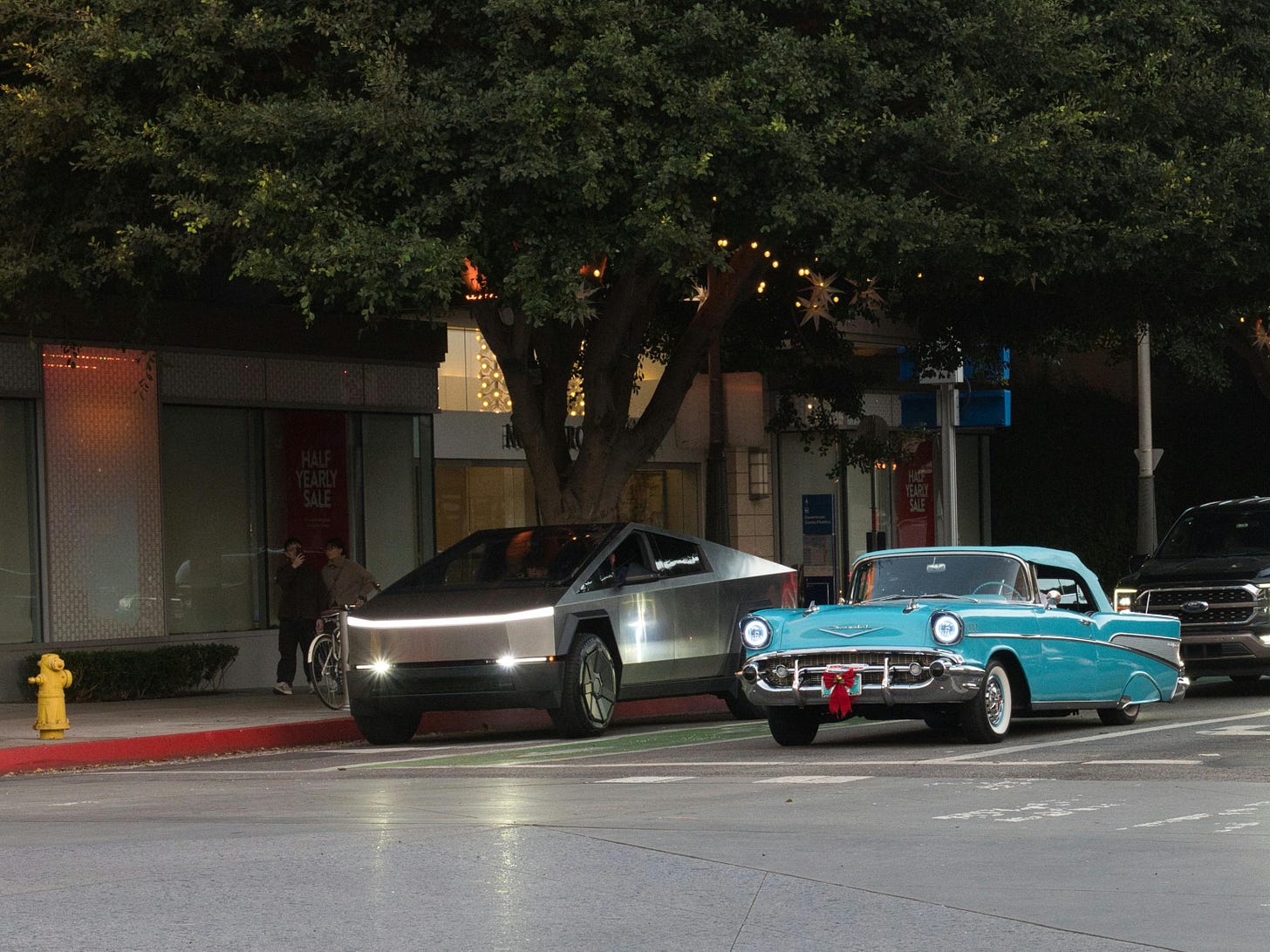
My toddler son mostly gets driven around in our whisper-quiet Nissan Leaf electric vehicle, yet when we first played with his little toy cars, some kind of repressed petrolhead burst out of me from who-knows-where.
“VROOM VROOM!” I roared while hooning the minuscule racecars about — a noise he emulated with delight, even if it sounded nothing like our actual car.
Seemingly innocuous moments like these all add up in determining what our culture tells boys they should desire, fuelling the phenomenon known as “petromasculinity”, which I wrote about a few years back and seems now to be reaching dangerous new heights.
Petromasculinity describes a culture that recognises fossil fuels as a core part of a macho identity, and rejects caring for the environment as effeminate;
Men consequently have larger emissions footprints than women, thanks to masculine associations with driving big cars and consuming emissions-intensive foods like red meat;
Some of the most environmentally destructive industries that need to be wound down are heavily male-dominated, contributing to resistance to climate action among men in the thrall of prominent climate deniers online;
Authoritarian movements largely supported by men are on the rise all over the world, on platforms of dismantling climate policies and doubling down on petrol, coal and gas;
That includes the recent US election, where Donald Trump returned to power promising to “drill baby drill” thanks to a strong majority of male voters, including a sharp rise in support among young men aged 30 and under.
The Rise Of The ‘Hegans’
What can be done? One school of thought suggests that green movements need to appeal better to traditional masculine norms.
Research has shown that “men-vironmentally friendly” branding can make males more eco-friendly — in one study men were more likely to donate to a nonprofit named Wilderness Rangers (which had a bold dark logo of a howling wolf) than an organization called Friends of Nature (which had a softer green logo);
Long dismissed as “soyboys”, men who eat climate-friendly plant-based diets have undergone a rebrand with the rise of bodybuilding “hegans” and the proliferation of protein-heavy imitation meats;
Electric vehicle sales are dominated by male customers, with marketing largely focusing on aspects that appeal to traditional masculinity such as performance, speed and technology;
Just as male-dominated industries are the areas that most urgently need to be phased out, two-thirds of people transitioning into green jobs are men, particularly in STEM and technical roles.

Put Women In Charge Of Climate Action
This approach has been rejected by some who say that traditional masculinity needs to be challenged by the climate movement rather than appealed to, and that the most direct path to a greener society is electing more women to power.
Academic Cara Daggett, who first coined the term “petromasculinity”, warns that “eco-modern masculinity” maintains a “patriarchal relation to nature — the faith in techno-fixes to stabilize the status quo”, embodied by men like Elon Musk;
This has led to a trend towards larger EVs such as the hulking Tesla Cybertruck, which requires more mining of metals than smaller vehicles do;
To get to the root of the problem requires the long-term project of raising boys free from the influences of toxic masculinity who are instead taught to care for the environment;
As this is happening, more immediate change to our climate trajectory can be realised by reducing male dominance of our economies and politics;
This can be achieved by supporting initiatives that seek to eliminate barriers in the way of women taking control of climate action, and backing political climate movements such as the largely female-led Climate 200 movement in Australia.
As for my own role as a father, I’m doing my best to shed any lingering traces of petromasculine influence. When I sit down to play with toy cars with my son now, I’m replacing the “VROOM” with a gentle “whoosh!”
More importantly — we’re spending less time hooning around with toy cars, and more time outside, nurturing a connection to nature.




